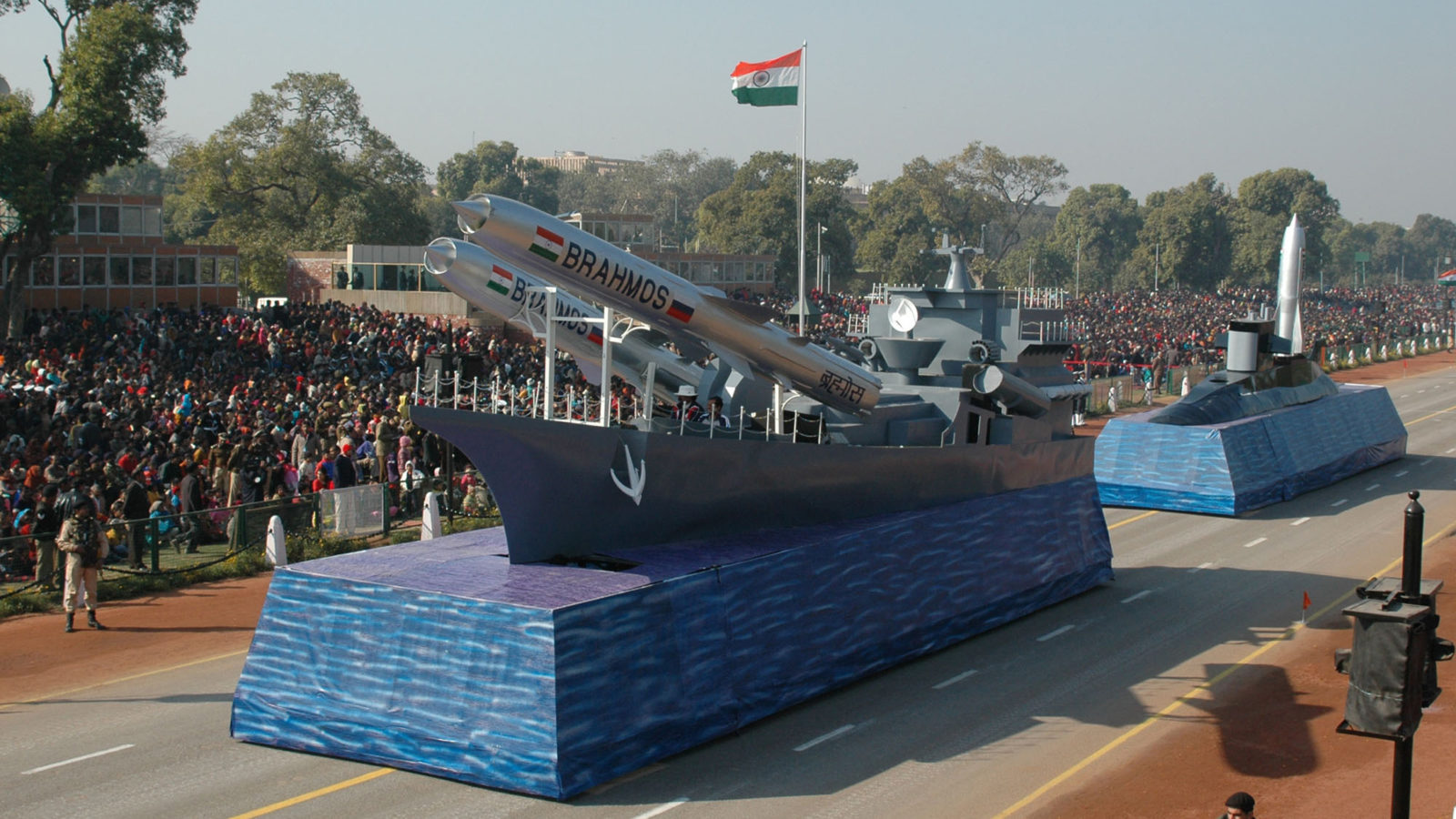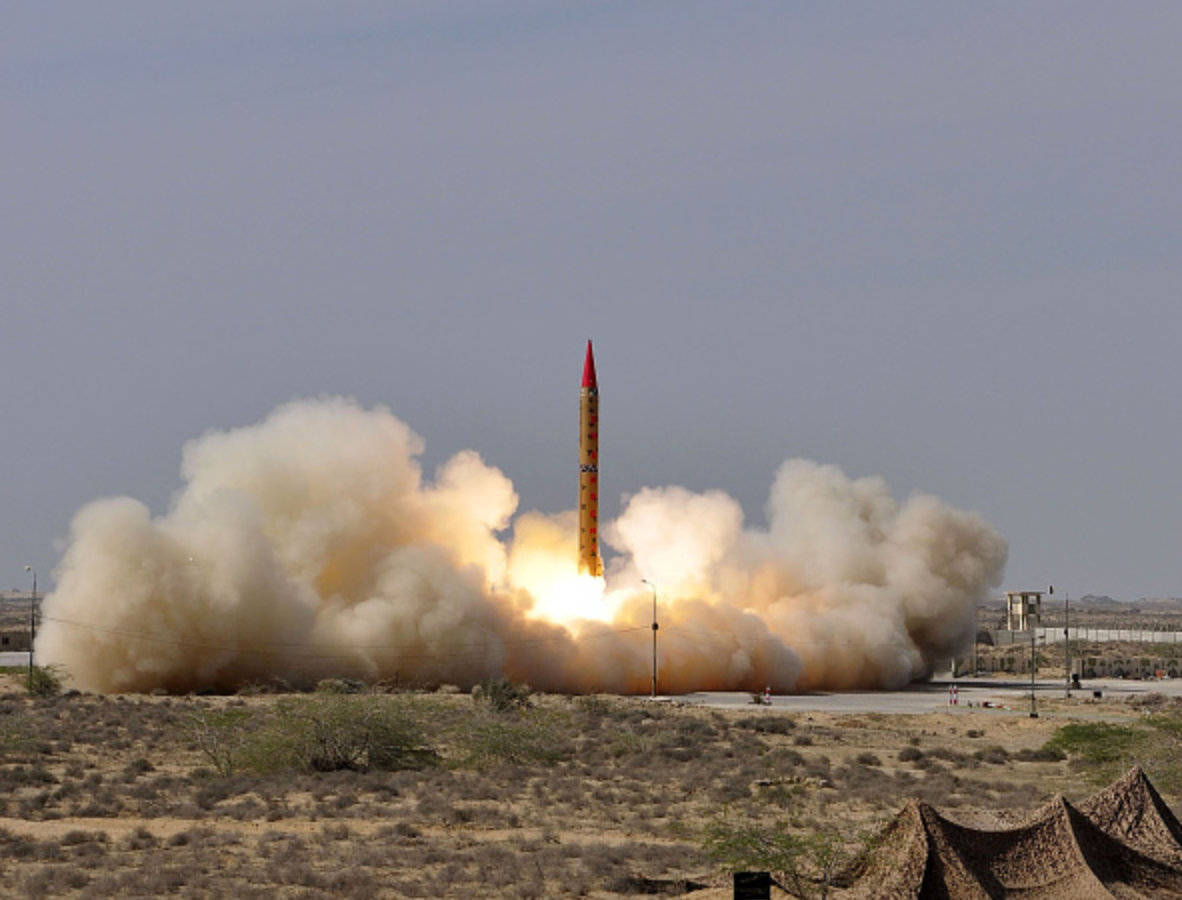by Michael Krepon

The state of nuclear danger in Southern Asia, as elsewhere, depends fundamentally on the state of political relations between rivals. Rivals can and do cooperate as well as compete with each other. In an oversimplified way, we can measure the degree of competition and cooperation along two axes.
One axis measures the steps taken to strengthen nuclear deterrence. Weapons that do not threaten do not deter. The very essence of nuclear deterrence is therefore threatening. Deterrence is typically strengthened in ways that make threats of use more credible. The more credible threats become, the steeper this axis of nuclear danger rises.
The second axis measures steps taken to provide reassurance that leaders are not inclined to use these threatening weapons. Reassurance requires effective diplomacy and a willingness to either resolve differences or at least to hold them in abeyance. Measures that signal diplomatic reassurance can at least partially offset growth in nuclear danger along the first axis.
Without elements of reassurance, there is no regulation in nuclear-armed rivalries. In a competition-oriented dynamic, measures to strengthen deterrence generate offsetting measures. The resulting competition does not make rivals feel safer. Nonetheless, they continue to compete, either in search of relative advantage or to avoid relative disadvantage.
The threat of escalation is inherent in a competitive dynamic between nuclear-armed rivals because if deterrent threats do not convey the potential for greater violence, they cease to deter. Effective nuclear deterrence therefore rests not only on a willingness to retaliate in kind, but also to up the ante. Since damage inflicted by the use of nuclear weapons cannot go unpunished, the choice for a nuclear-armed rival is either escalation control or escalation dominance. One problem with this choice is that rivals may not be on the same page. Another is that even the choice of escalation control has to be backed up by the threat of greater devastation.
These choices have profound implications that are hardly recognized by those who seek more credible deterrence threats. Because of the difficulties inherent in nuclear escalation control, the entire conceptual superstructure built around the dictates of nuclear deterrence collapses after nuclear first use.
Because of the impulse toward escalation, the entire conceptual superstructure built around the dictates of nuclear deterrence collapses after nuclear first use.
Escalation control and escalation dominance are intellectual constructs that work on the printed page and in war plans but are likely to fail catastrophically once the nuclear threshold is crossed and retaliation begins. Deterrence dies after first use as the Gates of Hell are opened.
Because nuclear deterrence is so inherently dangerous, it needs to be complemented by reassurance in the form of guardrails and stabilization measures. Otherwise, endless, interactive cycles to strengthen deterrence increase prospects for battlefield use, followed by incalculable loss.
One form of reassurance is unilateral restraint. This works for Great Britain and France, but unilateral restraint is a very rare commodity for nuclear-armed rivals. Other forms of reassurance are called for, and these require effective diplomacy.
With this in mind, let us look at the first axis on our notional graph – the axis that tracks deterrence strengthening measures. China, India, and Pakistan are building out force structures. Triads are taking shape. New types of ballistic and cruise missiles are being developed, flight tested, and fielded. India and Pakistan are growing their stocks of fissile material suitable for bomb making. All three states appear to be substantially increasing their inventories of nuclear weapons.
Two of the three – China and India – are moving smartly forward to employ their own assets in space that can be employed for nuclear as well as conventional warfare. Pakistan is likely to rely on commercial observation satellites and China for these purposes. Missile defense capabilities face a host of problems, and yet India is deploying them, much to Pakistan’s discomfort. New technologies in the form of stealthy cruise missiles and hypervelocity glide vehicles will challenge missile defenses even more, making vulnerabilities even greater.
More could be said, but there is no need for further elaboration. There is ample evidence that the trend line of deterrence strengthening measures is growing steadily in Southern Asia. As capabilities grow, war-fighting aspects of nuclear deterrence become more pronounced, even though two of the three states – China and India – have publicly stated doctrines of no first use.

Now let us turn to the second axis – that of reassurance measures. The diplomacy of reassurance can be implied or formal, tacit or explicit, modest or ambitious. The most formal and ambitious elements of reassurance are embodied in treaties.
Washington and Moscow have accomplished much by way of treaties in part because they accepted roughly equivalent capabilities. Essential equivalence is harder to imagine or to accept in bilateral accords between India and Pakistan or between India and China. A numbers-based, bilateral India-Pakistan or India-China treaty requires not only rough equality or an acceptable hierarchy but also acceptable and effective monitoring arrangements. These are significant hurdles. Trilateral China-India-Pakistan accords also seem very unlikely, since India would be outnumbered and since triangular nuclear competitions are prone to instability.
Other treaty-based avenues to stabilize the triangular competition in Southern Asia also face long odds. Multilateral diplomacy on a fissile material cut-off treaty is moribund. India and Pakistan have not signed or ratified the Comprehensive Test Ban Treaty; China has signed but not ratified. The United States could prompt a cascade of stabilizing ratifications, but this seems a tall order in the Biden administration, given the partisan divide on Capitol Hill.
As formal compacts remain in limbo, diplomatic reassurance in the form of guardrails and stabilization measures could still be pursued in the form of confidence-building and nuclear risk-reduction-measures. Here, too, the situation is troubling. Meaningful exchanges on these means of reassurance between India and Pakistan effectively ended over a decade ago. They never got started between China and India on nuclear-related issues.
To make matters worse, there is no evident effort to employ diplomacy to turn down the heat along contested borders. To the contrary, risk taking is more evident along both the Line of Control (LoC) dividing Kashmir and the Line of Actual Control between India and China.
Lines of communication to discuss national concepts of security and deterrence have atrophied, even in Track-II forums as well as between governmental experts. Insular thinking on these matters is always a danger and never a strength.
Strongmen rule in New Delhi and Beijing. They have the standing to lessen tensions along their contested border in lasting ways, but Beijing seems to be disinterested in doing so at present. There is every expectation that lulls in border clashes will be temporary, to be resumed as infrastructure improvements proceed on both sides.
Pakistan has a weak government and is unlikely to make overtures to improve relations with India as long as Kashmir remains in lockdown. Pakistan’s attempts to call attention to human rights abuses there stand in stark contrast to its awkward silence over the fate of the Uighurs in China.
As Pakistan’s ties with China and India’s ties with the United States deepen, so, too, does the standoff along the LoC. This situation, like that within Muslim majority Kashmir, is inherently unstable and prone to flare ups. New Delhi seems disinterested to improve ties and remains intent on doing better in the next border clash than in the previous one.
The two axes that measure nuclear danger in Southern Asia paint a troubling picture. Diplomatic relations between India and Pakistan and between China and India are in bad shape. Danger is rising along with deterrence capabilities, with little apparent prospect for new measures of diplomatic reassurance. In all likelihood, there will be new clashes along both contested borders. Two limited wars have already been fought between nuclear-armed rivals, one in 1969 between China and the Soviet Union, the other in 1999 between India and Pakistan. A third remains possible.
At a time when political relations are sour and diplomacy is dormant in Southern Asia, extending the 75-year-long norm of non-battlefield use and the norm against testing, now over two decades long, are absolutely central.
The outcome of past crises, border clashes, and limited wars has depended primarily on conventional forces in being and that can be brought to bear quickly as tensions mount. Nuclear use doctrines and plans offer no help to improve outcomes when these crises arise – they point instead to a great abyss.
There have been signs that Pakistan’s military has internalized this truth, despite its public fealty to a nuclear doctrine of first use. Much is riding on this supposition. The leaders of India and China appear to have internalized the non-utility of first use, even as they increase their options for second use.
The absence of guardrails and stabilization measures between India and Pakistan and between China and India is a matter of legitimate and pressing concern. Nuclear rivals—not just in Southern Asia, but elsewhere, as well—have lost sight of the requirements for responsible possession of nuclear weapons. They have focused on measures to strengthen deterrence while neglecting essential guardrails and stabilization measures. Deterrence without diplomatic reassurance is a story that is likely to end badly.
The most essential mark of responsible possession of nuclear weapons is not to use them in warfare. The stigma attached to nuclear testing reaffirms the norm of non-use. These norms are the fundamental building blocks for other measures of reassurance. At a time when political relations are sour and diplomacy is dormant in Southern Asia, extending the 75-year-long norm of non-battlefield use and the norm against testing, now over two decades long, are absolutely central.
No comments:
Post a Comment